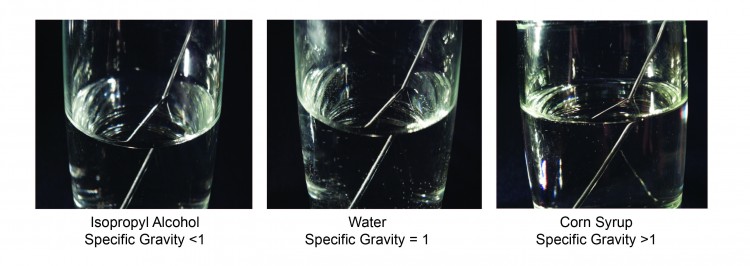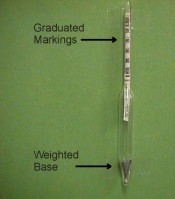In order to maintain process consistency in an industrial cleaning process, it is frequently necessary to monitor the concentration of chemistry in a cleaning solution. pH and specific gravity are two common parameters that can be used to determine the concentration of cleaning chemistries in water. This blog explores ways in which pH and specific gravity can be measured to determine chemical concentration.
pH –
pH as described in an earlier blog, is a measurement of the acidity or alkalinity of a liquid. In order to determine chemical concentration of a cleaning solution using pH, the pH of the solution must change as the chemical concentration changes AND, the cleaning power of the cleaning solution must be dependent on concentration. If there is no change in pH with concentration, or if concentration and the ability of the cleaning solution to produce the desired result are not related, a measurement of pH, of course, would be meaningless.
Provided the above conditions are met, pH can be measured using relatively inexpensive meters or paper pH indicator strips which are available from virtually any chemical supply source.
Specific Gravity –
Specific gravity can be measured using a variety of means. One common way to measure specific gravity is by using a “refractometer.” Refractometers measure the refraction of light as it passes from one material to another. The solution being measured is one material while the other is a known constant – usually glass. As the specific gravity increases, the angle of refraction increases as can be seen in the illustration below.
 Refractometers to measure specific gravity are readily available and range from an easy-to-use hand held version where the user sights through a lens to measure the refractive index to automated models which can provide a digital readout or an electrical signal which can be interpreted by computers and other capable devices.
Refractometers to measure specific gravity are readily available and range from an easy-to-use hand held version where the user sights through a lens to measure the refractive index to automated models which can provide a digital readout or an electrical signal which can be interpreted by computers and other capable devices.
Another way of measuring specific gravity is using a hydrometer. Hydrometers are usually glass tubes which have a “bulge” in them. Whey are calibrated for various ranges of specific gravity by placing a calibrated weight (usually metal beads of some sort) in the bulge area. In use, the hydrometer is floated in the liquid being tested. The hydrometer will float higher in a liquid of higher specific gravity and lower in a liquid with lower specific gravity. The specific gravity is detemined by reading calibrated marks on the hydrometer.
Unfortunately, both pH and specific gravity are temperature-dependent. An absolute reading requires applying a correction factor for temperature. In the case of pH, the correction may vary depending on the constituents of the solution. In the case of specific gravity, higher temperature will make the reading lower due to the fact that the specific gravity of liquid decreases as it expands in volume due to temperature.
Both pH an specific gravity are measurements that can be utilized to control chemical concentration manually. In some cases, however, they can also be used to automate the maintenance of a specific chemical concentration.
The next blog will explore more ways to measure chemical concentration of typical cleaning chemistries.
– FJF –



 English
English Spanish
Spanish Chinese
Chinese Canada
Canada Mexico
Mexico United Kingdom
United Kingdom




